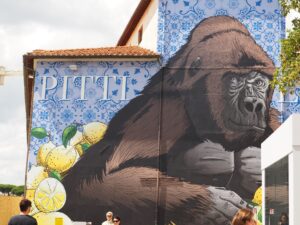Plastic-Eating Enzymes: The Science Behind Lululemon’s Sustainable Jacket

"Plastic-Eating" Enzymes: The Science Behind Lululemon's Sustainable Jacket
Fashnopsis:
- Recycled Revolution: Lululemon’s Packable Anorak incorporates recycled plastic waste, discarded clothing, and captured carbon emissions.
- Enzyme Innovation: Samsara Eco’s EosEco technology breaks down plastic waste using enzymes, enabling a circular clothing lifecycle.
- A Greener Future: This collaboration paves the way for a more sustainable fashion industry with reduced environmental impact.
Lululemon’s highly anticipated Packable Anorak jacket breaks new ground in sustainable fashion. Now available online in Australia, the US, and Canada, this innovative garment boasts a unique composition:
- Recycled mixed plastic waste
- Discarded Lululemon apparel
- Reclaimed carbon emissions
This blend signifies a significant step towards a more circular clothing lifecycle.
Polyester’s Environmental Footprint
Polyester’s lightweight, durable, and versatile nature makes it a popular clothing choice. However, its production and disposal raise environmental concerns. Global polyester production annually surpasses 63 million tonnes, with a significant portion ending up in landfills or polluting ecosystems.
Samsara Eco’s Enzymatic Recycling Innovation
The Packable Anorak leverages Samsara Eco’s revolutionary EosEco technology. This technology employs a unique blend of biophysics, chemistry, biology, and artificial intelligence (AI) to develop “plastic-eating” enzymes. These enzymes effectively break down plastic waste into its base components, seamlessly integrating them into existing manufacturing processes for innovative products like the Packable Anorak.
Addressing the Plastic Crisis Through Enzyme Recycling
Samsara Eco’s EosEco technology offers several environmental benefits:
- Reduced Plastic Waste: By diverting plastic waste from landfills and the environment, EosEco promotes a cleaner future.
- Circular Clothing Lifecycles: Clothes made with recycled materials can be repeatedly recycled, minimizing environmental impact.
- Material Versatility: EosEco tackles various fabric blends and feedstocks, including poly/cotton, nylon/elastane blends, carpet fibers, and even airbags.
- Performance Parity: Materials recycled with EosEco perform on par with virgin materials, ensuring quality without compromise.
A Vision for Sustainable Fashion
The Lululemon and Samsara Eco collaboration exemplifies the potential for a more sustainable fashion industry. By embracing recycled materials and innovative technologies, we can create high-performing clothing with a reduced environmental footprint. This aligns with Lululemon’s commitment to sustainability, with a goal of transitioning to 100% preferred materials and end-of-use solutions by 2030.
Image Credits: Lululemon





